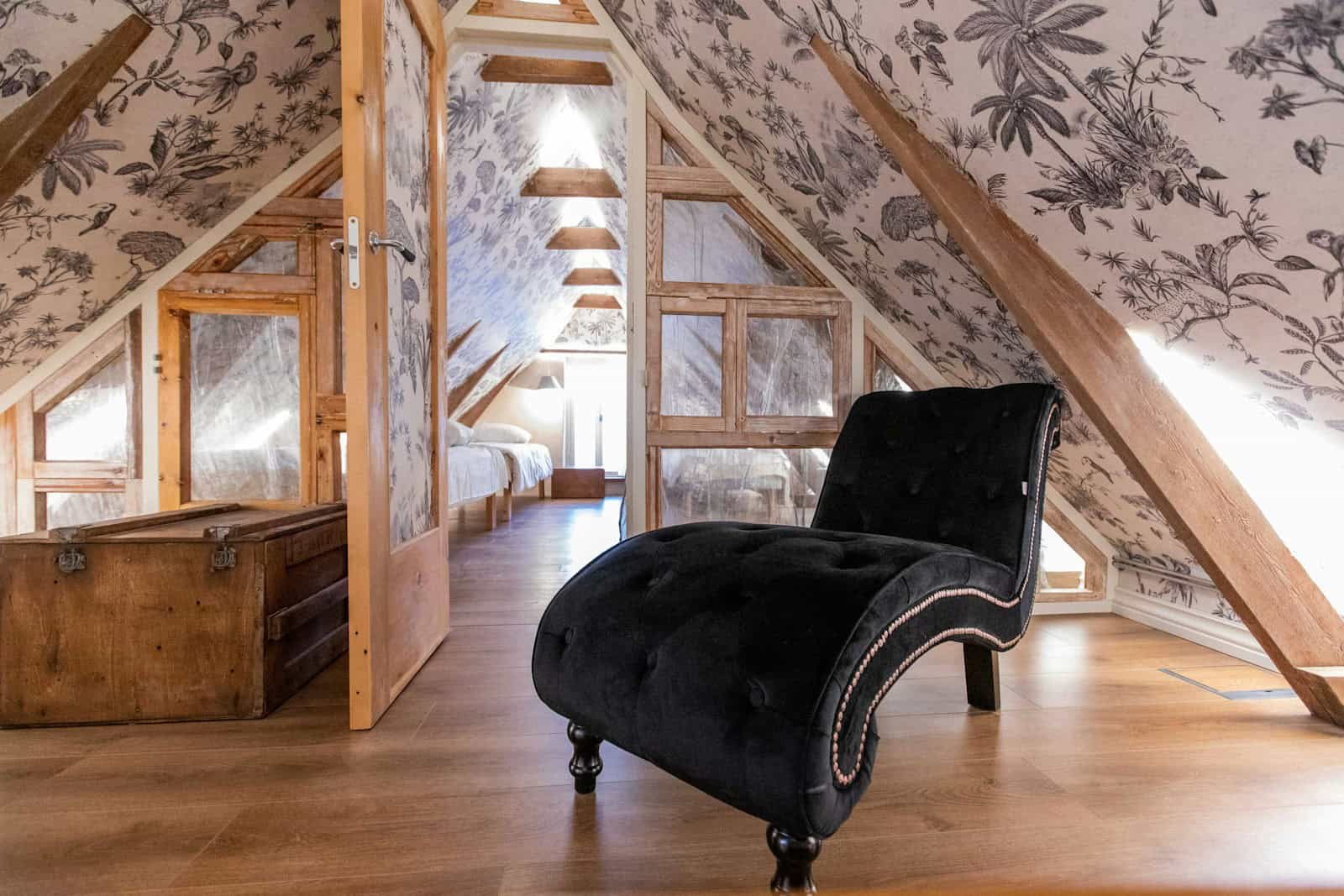Getting ready to put up wallpaper? You might be wondering if you need to do anything special to the walls first. The short answer is yes.
You should prime your walls before wallpapering to ensure the best results. Diluted wallpaper paste is often used for this. It helps seal the wall and makes the paper stick better. This step is key for a smooth finish that lasts.
Before priming you’ll need to prepare the walls. Fill any cracks or holes. Sand them smooth. Clean the walls well. For old wallpaper remove it first. New walls should be dry and cured. These steps set you up for success with your new wallpaper.
Preparation of Walls Before Wallpapering
Getting walls ready for wallpaper is key. It helps the paper stick better and look great. These steps will make sure your walls are set for papering.
Assessing Wall Condition
Check the walls first. Look for cracks, holes, or bumps. Fill any cracks or holes with spackle. Let it dry then sand it smooth. For big holes, use a patch kit.
Test the wall for moisture. Damp walls can cause mold under wallpaper. Use a moisture meter to check. Fix any water issues before you start.
Feel the wall texture. Smooth walls are best for wallpaper. If walls are bumpy, sand them down. Very rough walls may need a skim coat of joint compound.
Cleaning and Priming
Clean the walls well. Use sugar soap or a mix of water and vinegar. This removes dirt and grease. Rinse with clean water and let dry.
Prime the walls next. This step is crucial. It helps the wallpaper stick and last longer. Choose the right primer for your wall type. Use acrylic primer for most walls. Oil-based primer works for tough stains.
Apply primer with a roller. Use even strokes. Cover the whole wall. Let it dry fully before you start papering.
Applying Base Layers
Some walls need extra prep. Uneven or very rough walls may need lining paper. This gives a smooth base for wallpaper.
To apply lining paper:
- Cut strips to fit the wall height
- Apply wallpaper paste to the wall
- Hang strips vertically
- Smooth out air bubbles
- Let dry fully
For extra grip, use a special wallpaper primer. This helps paper stick to slick surfaces. Apply it like regular primer. Let it dry before hanging wallpaper.
Considerations for Wallpaper Application
Picking the right wallpaper and dealing with room conditions are key for success. These factors affect how well the paper sticks and looks over time.
Selecting the Right Wallpaper
Choose wallpaper that fits your room’s use. Vinyl works well in damp areas like kitchens and bathrooms. It’s easy to clean and resists moisture. For dry rooms paper or fabric types can work fine.
Think about the wall surface too. Smooth walls are best for delicate papers. Textured walls need sturdy options that can hide bumps.
Pattern size matters in small rooms. Big prints may overwhelm the space. Small patterns often work better. Solid colors can make a room feel bigger.
Test wallpaper samples in your room first. See how they look in different lights. This helps avoid surprises later.
Managing Environmental Factors
Room conditions affect wallpaper hanging. Aim for a temp of 55-80°F and low humidity. This helps the paste dry right.
Close windows and doors while working. Drafts can make the paper bubble or wrinkle. Turn off fans and AC too.
Check for moisture issues before you start. Fix any leaks or damp spots. Use a moisture barrier if needed to protect the paper.
Consider the season. Spring and fall often work best. Summer can be too humid. Winter air may be too dry.
Let new plaster or paint dry fully before papering. This can take weeks. Rushing can lead to peeling later.
Frequently Asked Questions
Preparing walls properly is key for successful wallpapering. Here are some common questions about wall prep and sizing.
What are the best practices for priming a wall prior to wallpaper installation?
Clean the wall first. Fill holes and sand bumps. Apply a quality primer made for wallpaper. Let it dry fully before papering.
How should walls be prepared after removing old wallpaper for a new application?
Remove all old wallpaper and glue. Patch any damage. Sand the walls smooth. Clean off dust. Prime the walls before adding new paper.
What is the recommended waiting period to apply wallpaper after painting a wall?
Wait at least 4 weeks after painting. This lets the paint cure fully. Fresh paint can stop wallpaper paste from sticking well.
Is sizing necessary before wallpapering a wall, and what are the benefits?
Sizing is important. It seals the wall and helps paste stick better. It also makes taking down wallpaper easier later.
Can peel and stick wallpaper be applied without prepping the wall?
Some prep is still needed. Clean the wall. Fill holes and sand bumps. A smooth surface helps peel-and-stick paper look best.
How does one apply sizing solution to walls in preparation for wallpapering?
Mix the sizing as directed. Use a paint roller to apply it evenly. Cover the whole wall. Let it dry fully before hanging wallpaper.







